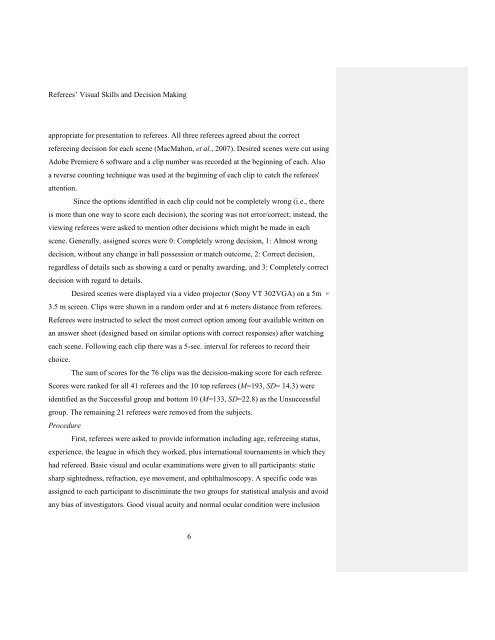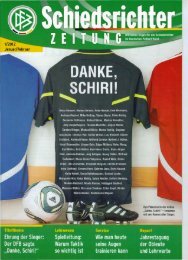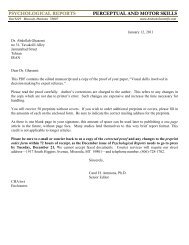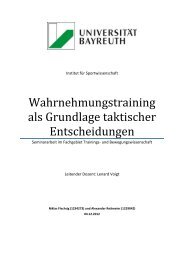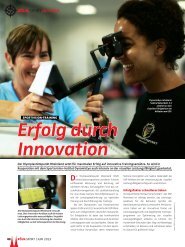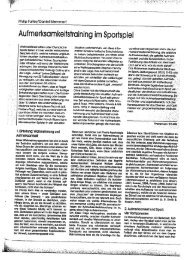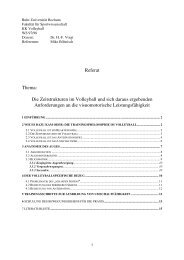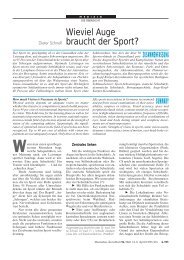psychological reports perceptual and motor skills - Dynamic-Eye
psychological reports perceptual and motor skills - Dynamic-Eye
psychological reports perceptual and motor skills - Dynamic-Eye
You also want an ePaper? Increase the reach of your titles
YUMPU automatically turns print PDFs into web optimized ePapers that Google loves.
Referees’ Visual Skills <strong>and</strong> Decision Making<br />
appropriate for presentation to referees. All three referees agreed about the correct<br />
refereeing decision for each scene (MacMahon, et al., 2007). Desired scenes were cut using<br />
Adobe Premiere 6 software <strong>and</strong> a clip number was recorded at the beginning of each. Also<br />
a reverse counting technique was used at the beginning of each clip to catch the referees'<br />
attention.<br />
Since the options identified in each clip could not be completely wrong (i.e., there<br />
is more than one way to score each decision), the scoring was not error/correct; instead, the<br />
viewing referees were asked to mention other decisions which might be made in each<br />
scene. Generally, assigned scores were 0: Completely wrong decision, 1: Almost wrong<br />
decision, without any change in ball possession or match outcome, 2: Correct decision,<br />
regardless of details such as showing a card or penalty awarding, <strong>and</strong> 3: Completely correct<br />
decision with regard to details.<br />
Desired scenes were displayed via a video projector (Sony VT 302VGA) on a 5m<br />
3.5 m screen. Clips were shown in a r<strong>and</strong>om order <strong>and</strong> at 6 meters distance from referees.<br />
Referees were instructed to select the most correct option among four available written on<br />
an answer sheet (designed based on similar options with correct responses) after watching<br />
each scene. Following each clip there was a 5-sec. interval for referees to record their<br />
choice.<br />
The sum of scores for the 76 clips was the decision-making score for each referee.<br />
Scores were ranked for all 41 referees <strong>and</strong> the 10 top referees (M=193, SD= 14.3) were<br />
identified as the Successful group <strong>and</strong> bottom 10 (M=133, SD=22.8) as the Unsuccessful<br />
group. The remaining 21 referees were removed from the subjects.<br />
Procedure<br />
First, referees were asked to provide information including age, refereeing status,<br />
experience, the league in which they worked, plus international tournaments in which they<br />
had refereed. Basic visual <strong>and</strong> ocular examinations were given to all participants: static<br />
sharp sightedness, refraction, eye movement, <strong>and</strong> ophthalmoscopy. A specific code was<br />
assigned to each participant to discriminate the two groups for statistical analysis <strong>and</strong> avoid<br />
any bias of investigators. Good visual acuity <strong>and</strong> normal ocular condition were inclusion<br />
6


